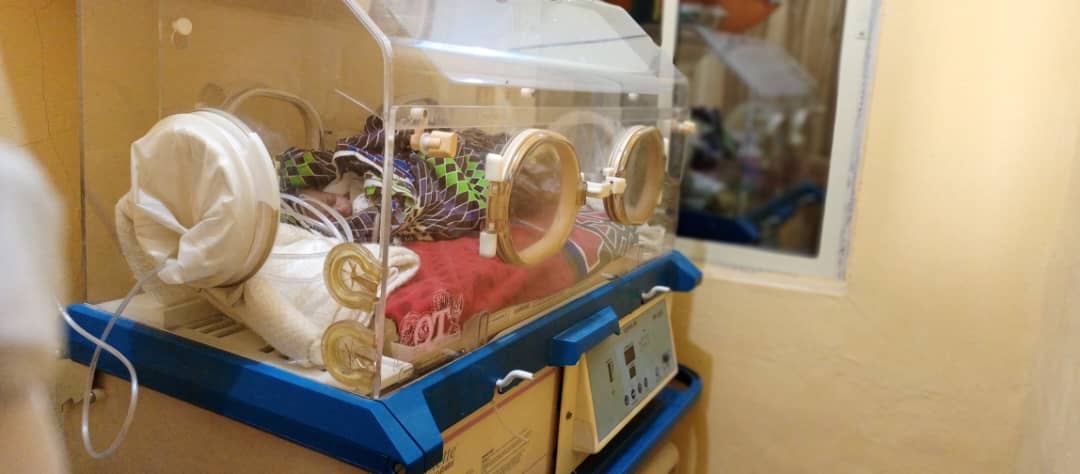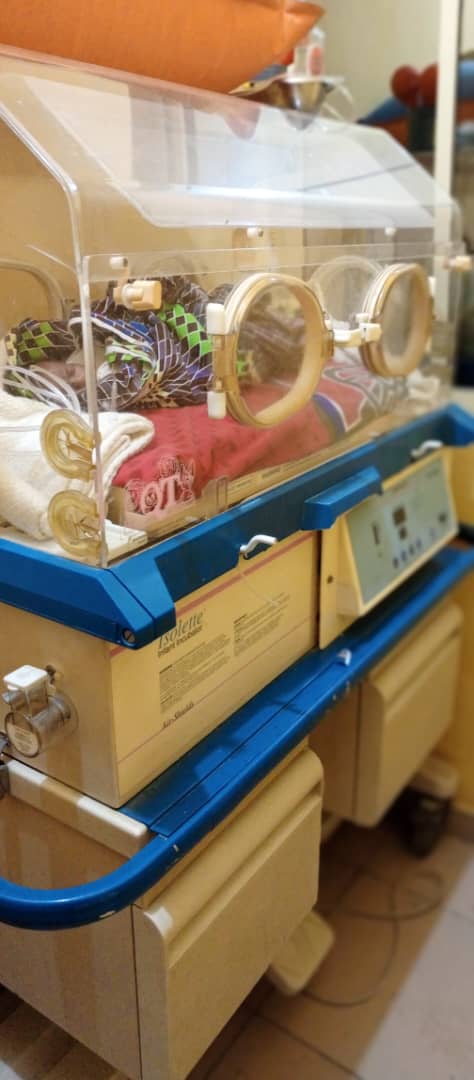WHAT IS A PRETERM BIRTH?
A premature birth is a birth that takes place more than three weeks before the baby’s estimated due date. In other words, a premature birth is one that occurs before the start of the 37th week of pregnancy.
Premature babies, especially those born very early, often have complicated medical problems. Typically, complications of prematurity vary. But the earlier your baby is born, the higher the risk of complications.
Depending on how early a baby is born, he or she may be:
Late preterm, born between 34 and 36 completed weeks of pregnancy
Moderately preterm, born between 32 and 34 weeks of pregnancy
Very preterm, born at less than 32 weeks of pregnancy
Extremely preterm, born at or before 25 weeks of pregnancy
Most premature births occur in the late preterm stage.
TYPICAL IMAGES OF A PRETERM BIRTH


WHAT ARE THE SYMPTOMS OF PRETERM BIRTH?
Your baby may have very mild symptoms of premature birth, or may have more-obvious complications.
Some signs of prematurity include the following:
Small size, with a disproportionately large head
Sharper looking, less rounded features than a full-term baby’s features, due to a lack of fat stores
Fine hair (lanugo) covering much of the body
Low body temperature, especially immediately after birth in the delivery room, due to a lack of stored body fat
Laboured breathing or respiratory distress
Lack of reflexes for sucking and swallowing, leading to feeding difficulties
WHAT ARE THE SPECIAL CARE GIVEN TO BABIES BORN PREMATURELY?
If you deliver a preterm baby, your baby will likely need a longer hospital stay in a special nursery unit at the hospital. Depending on how much care your baby requires, he or she may be admitted to an intermediate care nursery or the neonatal intensive care unit (NICU). Doctors and a specialized team with training in taking care of preterm babies will be available to help care for your baby. Don’t hesitate to ask questions.
Your baby may need extra help feeding, and adapting immediately after delivery. Your health care team can help you understand what is needed and what your baby’s care plan will be.
WHAT ARE THE RISK FACTORS?
Often, the specific cause of premature birth isn’t clear. However, there are known risk factors of premature delivery, including:
1. Having a previous premature birth
2. Pregnancy with twins, triplets or other multiples
3. An interval of less than six months between pregnancies
4. Conceiving through in vitro fertilization
5. Problems with the uterus, cervix or placenta
6. Smoking cigarettes or using illicit drugs
7. Some infections, particularly of the amniotic fluid and lower genital tract
8. Some chronic conditions, such as high blood pressure and diabetes
9. Being underweight or overweight before pregnancy
10.Stressful life events, such as the death of a loved one or domestic violence
11. Multiple miscarriages or abortions
12.Physical injury or trauma
WHAT ARE THE COMPLICATIONS?
SHORT TERM COMPLICATIONS
In the first weeks, weeks, the complications of premature birth may include:
1. Breathing problems
2. Heart problems
3. Temperature control problems
4. Gastro-intestinal problems
5. Blood problems
6. Metabolism problems
7. Immune system problems
LONG-TERM COMPLICATIONS
In the long term, premature birth may lead to the following complications:
1. Cerebral palsy
2. Impaired learning
3. Vision problems
4. Hearing problems
5. Dental problems
6. Behavioral and psychological problems
7. Chronic health issues
WHAT ARE THE MOST COMMON CAUSES OF PREMATURED BIRTH?
Premature births can happen suddenly, with no known cause. Sometimes providers have to induce (start) labour early for medical reasons. People can also go into premature labour due to:
1. Chronic health conditions, such as diabetes or infections.
2. Drug or alcohol abuse.
3. Multiple pregnancies, such as twins or triplets.
4. Preeclampsia (high blood pressure during pregnancy).
5. Problems with their uterus or cervix.
6. Vaginal bleeding or infections during pregnancy.
WHAT ARE THE PREVENTIONS?
Although the exact cause of preterm birth is often unknown, there are some things that can be done to help women — especially those who have an increased risk — to reduce their risk of preterm birth, including:
Progesterone supplements. Women who have a history of preterm birth, a short cervix or both factors may be able to reduce the risk of preterm birth with progesterone supplementation.
Cervical cerclage: This is a surgical procedure performed during pregnancy in women with a short cervix, or a history of cervical shortening that resulted in a preterm birth.
During this procedure, the cervix is stitched closed with strong sutures that may provide extra support to the uterus. The sutures are removed when it’s time to deliver the baby. Ask your doctor if you need to avoid vigorous activity during the remainder of your pregnancy.
WHAT ARE THE DIAGNOSIS?
After your premature baby is moved to the NICU, he or she may undergo a number of tests. Some are on-going, while others may be performed only if the NICU staff suspects a particular complication.
Possible tests for your premature baby may include:
Breathing and heart rate monitor. Your baby’s breathing and heart rate are monitored on a continuous basis. Blood pressure readings are done frequently, too.
Fluid input and output: The NICU team carefully tracks how much fluid your baby takes in through feedings and intravenous fluids and how much fluid your baby loses through wet or soiled diapers.
Blood tests: Blood samples are collected through a heel stick or a needle inserted into a vein to monitor a number of critical substances, including calcium, glucose and bilirubin levels in your baby’s blood. A blood sample may also be analyzed to measure the red blood cell count and check for anemia or assess for an infection.
If your baby’s doctor anticipates that several blood samples will be needed, the NICU staff may insert a central umbilical intravenous (IV) line, to avoid having to stick your baby with a needle each time blood is needed.
Echocardiogram: This test is an ultrasound of the heart to check for problems with your baby’s heart function. Much like a fetal ultrasound, an echocardiogram uses sound waves to produce moving images on a display monitor.
Ultrasound scan. Ultrasound scans may be done to check the brain for bleeding or fluid buildup or to examine the abdominal organs for problems in the gastrointestinal tract, liver or kidneys.
Eye exam: An ophthalmologist (eye doctor) may examine your baby’s eyes and vision to check for problems with the retina (retinopathy of prematurity).
If your baby develops any complications, other specialized testing may be needed.
WHAT ARE THE TREATMENT OPTIONS IN OUR FACILITY?
Preterm infants often need specialized medical care in a neonatal intensive care unit (NICU). This is a specific part of the hospital for babies in critical condition. Some babies stay in the NICU for weeks or months.
SUPPORTIVE CARE
Specialized supportive care for your baby may include:
Being placed in an incubator. Your baby will probably stay in an enclosed plastic bassinet (incubator) that’s kept warm to help your baby maintain normal body temperature. Later on, NICU staff may show you a particular way to hold your baby — known as “kangaroo” care — with direct skin-to-skin contact.
Monitoring of your baby’s vital signs. Sensors may be taped to your baby’s body to monitor blood pressure, heart rate, breathing and temperature. A ventilator may be used to help your baby breathe.
Having a feeding tube. At first your baby may receive fluids and nutrients through an intravenous (IV) tube. Breast milk may be given later through a tube passed through your baby’s nose and into his or her stomach (nasogastric, or NG, tube). When your baby is strong enough to suck, breast-feeding or bottle-feeding is often possible.
Replenishing fluids. Your baby needs a certain amount of fluids each day, depending upon his or her age and medical conditions. The NICU team will closely monitor fluids, sodium and potassium levels to make sure that your baby’s fluid levels stay on target. If fluids are needed, they’ll be delivered through an IV line.
Spending time under bilirubin lights. To treat infant jaundice, your baby may be placed under a set of lights — known as bilirubin lights — for a period of time. The lights help your baby’s system break down excess bilirubin, which builds up because the liver can’t process it all. While under the bilirubin lights, your baby will wear a protective eye mask to rest more comfortably.
Receiving a blood transfusion. Your preterm baby may need a blood transfusion to raise blood volume — especially if your baby has had several blood samples drawn for various tests.
Medications
Medications may be given to your baby to promote maturing and to stimulate normal functioning of the lungs, heart and circulation. Depending on your baby’s condition, medication may include:
Surfactant, a medication used to treat respiratory distress syndrome
Fine-mist (aerosolized) or IV medication to strengthen breathing and heart rate
Antibiotics if infection is present or if there’s a risk of possible infection
Medicines that increase urine output (diuretics) to manage excess fluid
An injection of medication into the eye to stop the growth of new blood vessels that could cause retinopathy of prematurity
Medicine that helps close the heart defect known as patent ductus arteriosus.
Bob
Contact your healthcare provider immediately if you notice any of the following signs of preterm labour:
Abnormal vaginal discharge (leaking fluid) or bleeding.
Contractions or cramping, with or without diarrhoea.
On-going pain in the lower back.
Pressure in the pelvis or abdomen.
Your “water breaking.

Recent Comments